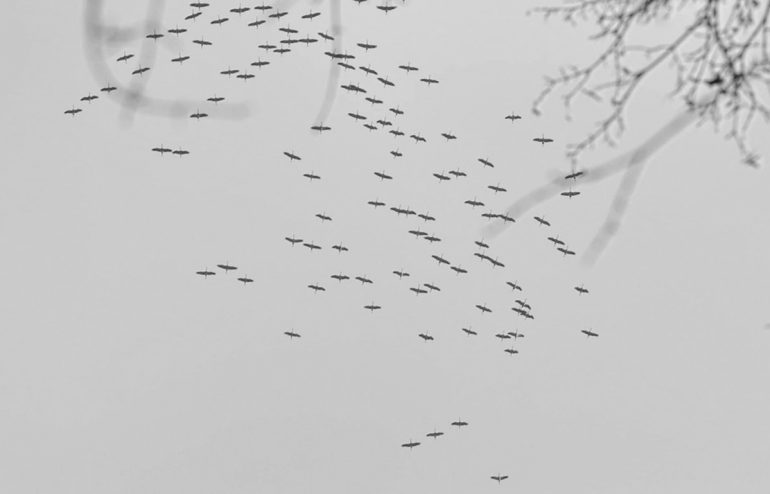“Post-heroic” is what Dirk Baecker (University of Witten Herdecke) calls the characteristics of leaders after – or just in between – lockdowns, partial physical isolation, and instantaneous expectations about the drivers of our happiness, our success.
And returning from the buzzword world to the mindful balance between disruption, technology pushes, (assumed) facts, and alignment with long-term values is what Simon, Weber and Friends call for.
Wow, this is going to be exciting. How do we manage clarity, disenchantment from learned demands (on us and of others) like “faster, better, higher, further” and balance them with unpredictability and vulnerability?
How do we become more robust, more resilient?
My assumption for the solution is a bold hypothesis: by taking more personal responsibility, becoming more attentive to the system as a whole, and giving up some habitual selfishness, which includes growth at the expense of others…..
Since the path to achieving the goal involves some effort, I begin with the benefits from transformation:
– We gain security from ourselves and experience in dealing with unfamiliar situations and others, even when faced with new, unexpected developments (Peter Sloterdijk calls this immunity through shared security)
– We learn to appreciate and consciously enjoy the beauty of our lives alongside all our efforts
– Our social competence and thus the easier, friendly interaction with ourselves and others moves to a new level. The reward: friendly recognition away from functional hierarchies.
– From a meta-level we gain overview of the essential. One of my favorite quotes by the philosopher Peter Sloterdijk: If you want an overview, you have to overlook some things.
Did you find yourself in this?
It can be so simple. Or?
– The first question that takes us further is: What is so significant that it should remain in our (professional and private) lives? What gives you stability, security, well-being, and a framework for the goals you still want to achieve, the beauty you hope toward?
– Then: what, beyond all learning from the momentary situation, learning about ourselves and our robustness, should become different, more beautiful in our lives? We are living a month-long seminar right now, training this co-immunity that is only ensured through togetherness, mutual recognition. What are the insights from this?
– And finally: what do we need to let go of now, to throw off ballast? Admittedly: the current situation makes it almost on its own to separate us from old patterns, beliefs, habits. Maybe there are other issues you want to leave behind, fears, differences, but also simply overcrowded closets and desks. Tidy up.
Reinvention as a leader
The involuntary or sometimes voluntary, conscious distancing has done its part to evaluate more critically the desire for the “post-charismatic” leader (Matthias Karmasin) and to discard it “as a relic of little use”, – even if the cry for rapprochement with the old, familiar is loud in some places:
FOMO control (Fear of missing out control). Is that really so? Or were we allowed – unfortunately without playful experience – to perceive ourselves already in a new attitude, new behavior? Maybe even find pleasure in it.
What are we already letting go of, letting go of, perhaps with quiet regret and firm resolution to remember it long and in good, and yet?
The answers are with you, individually and uniquely. And these answers influence us as leaders, as opinion leaders, as role models for those who need security, courage and a framework for their own development.
On a meta-level, “clearing out” simply also means gaining an overview and making room for new things, new interests, new methods, new networks.
It is a never-ending story that has now picked up speed and therefore requires our attention all the more. Let’s look forward to all the new and let’s look forward to beautiful memories and sometimes the transformation of sorrowful learning into hopeful understanding.
All the best to you, write to us, we look forward to it,
Yours Michel and Barbara










